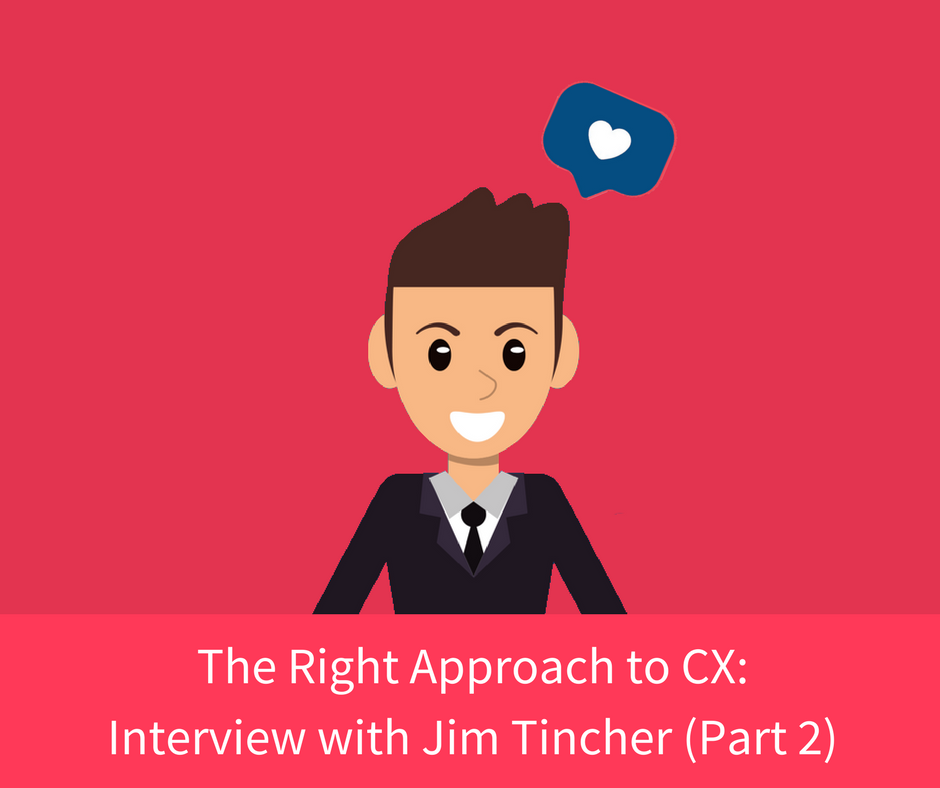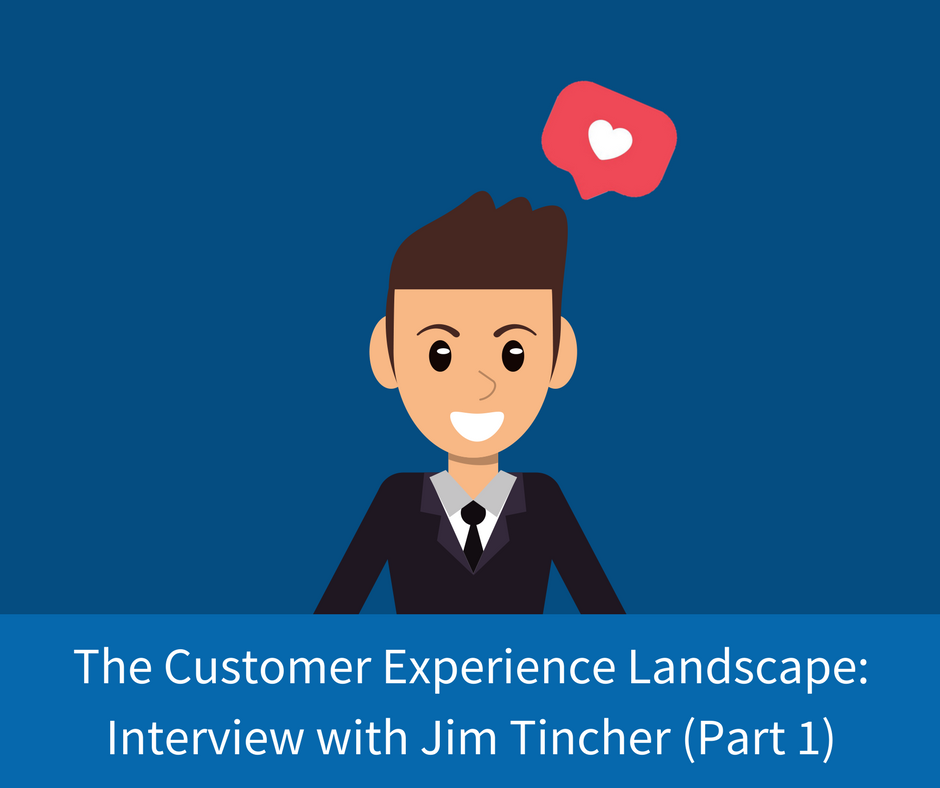How to Create a CX Approach for Maximum Impact [White Paper]
There are several trends occurring across the world that are contributing to hyper-competition around customer experience. Increasingly educated and...
5 min read
Justine Lambros April 05, 2018

In part-one of our interview, Jim - founder of Heart of the Customer and Certified Customer Experience Professional (CCXP) - provides many great insights for customer experience (CX) professionals looking to build a standout CX program across their organization.

Let's first start with what you don't do; which is shaming. It's very easy to do. Shaming someone hoping they'll see the light and start being more customer-focused never works. You have to focus on using your bright spots to drive things forward.
The other part is that we CX people are terrible at bringing in business metrics. We all want to use Net Promoter Score or other survey metrics. Unfortunately, your internal customers don't always care about survey scores. What they care about is revenue and costs, and we CX people aren’t always comfortable talking in that language. We tend to believe that if the company does the right thing for customers, everything will get better. But we need to prove it through business metrics.
For example, we’re working with a software company on their implementation journey. The ultimate goal is to improve the percentage of customers who renew their service. Great! But, with two-year contracts, if we do everything perfectly, it could be years before we see that return on investment.
For this client, the short-term effort is software usage. There is a clear linkage between software usage and likeliness to renew. Think about getting the right KPIs. Yes, we should also look for an improved Net Promoter Score. But, your business is going to care more about the software usage because they can easily see that it matters.
Tying your CX work directly to revenue can be difficult, but there are always short-term KPIs that your internal customers care about that can be linked to the customer-focused improvements.
The customer is always right.
Jungle Jim's Eatery, a restaurant chain and customer of Intouch Insight, has a great approach to this concept. Their CX lead says, “The guest may not always be right, but the guest is always the guest.” The guest is important. But they don't always know how to ask you what they're looking for. CX people make the mistake of asking customers, "What do you want us to do?" instead of "What are you trying to accomplish?" When you understand what your customers are trying to accomplish, you can use that knowledge to help your customers achieve their goal.
Henry Ford has a famous quote, "If I had asked people what they wanted, they would have said faster horses." While there’s no real proof he said this; it's such a true phrase. It illustrates that you can't just ask your customers what they want. Instead, your customers should say, "I want to get around more quickly. I want it to be simpler. I want to have a horse that doesn't poop all over the road." Okay, now we can build something with that. They wouldn't know to ask for a car.
Emotions are the most critical element of your strategy. When people hear that, they think I'm saying their strategy should be to become so loved that customers get their company's logo tattooed on their arms. I'm not saying your customers should be tattooing your logo on them, although that works for Apple and Harley Davidson. But not for insurance companies.
Neuroscience research shows customers make an emotional decision first, and then come up with a rational reason right afterward. If you're going after the rational reason, you're going to lose.
You have to connect with customers through their underlying emotions. Whether that's trust or enjoyability, you must understand the emotions that matter to your customers and look at how you're delivering against them. That's where technology can help us.
I'm a real fan of text analytics. Jiffy Lube did a study about five years ago across their chain with Net Promoter Score (NPS). They could not find any linkage across any of their locations between improved NPS and increased revenue. But when they looked at their unstructured data, they found that for every 1% increase in customers who mentioned words like “quick” and “easy” about their experience, there was $14,000 in additional revenue for that location. That's how you track emotions - based on what people are saying.
There are many different business benefits from CX, but the four most important are:
Beyond Philosophy did a great study about when people call to make a complaint. What they found is that the amount of work a customer had to go through to make their complaint was the single most important thing in determining whether they came out of it likely to reuse the company. In fact, making it easy to complain was more important to a future relationship than the outcome - such as giving them a gift card - was.
Start with the voice of the customer. That will tell you where you need to focus next. There’s no one point. For some, it’s technology. For many, the biggest efforts should be in the culture. But you need the VOC to tell you where to invest.
Where you need to focus depends on where your problems are. For example, I recently worked with a manufacturer whose focus needs to be in their sales model. Not technology, their sales model is broken. With another client, it had to do with their outdated technology. Their customers are getting frustrated and going somewhere else. Another example is with a company who has a very good CX – always at the top of the ratings. But their biggest problem is that their value proposition is misaligned. It's not an investment issue; it's that they're missing out on customers' needs.
It varies; training and technology are common. But as important as where to invest is how to invest in these areas. Start investing in the voice of the customer and align your organization. Once you’ve accomplished that, you’ll have a clear direction on where to invest next.
That's it for this series! Stay tuned for more interviews on unique topics from Jim Tincher and other great thought leaders in the customer experience space. If you enjoyed this interview series and want to hear how our customers approach customer experience, download our latest whitepaper published by Intouch Insight in partnership with Jim Tincher.
You might also like:
![How to Create a CX Approach for Maximum Impact [White Paper]](https://www.intouchinsight.com/hubfs/How%20to%20create%20a%20CX%20approach%20for%20maximum%20impact%20%5Bwhitepaper%5D.png)
There are several trends occurring across the world that are contributing to hyper-competition around customer experience. Increasingly educated and...

We recently sat down with Jim Tincher, founder of Heart of the Customer and Certified Customer Experience Professional (CCXP), to get his take on the...

We’ve just returned from a fantastic trip to New Orleans where we attended the 8th annual CXPA Insight Exchange, which was hosted at the Downtown...